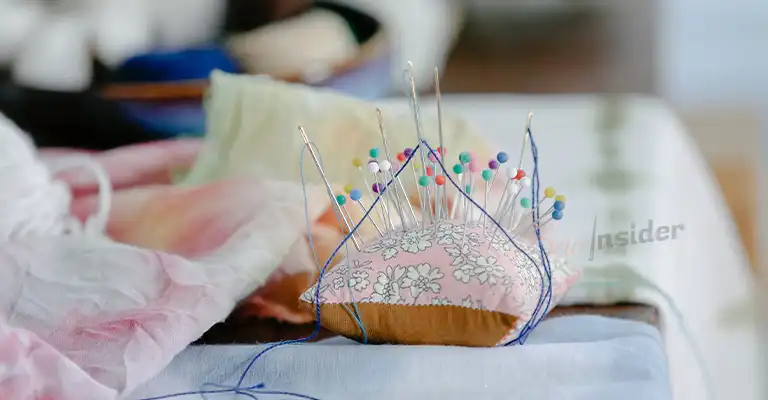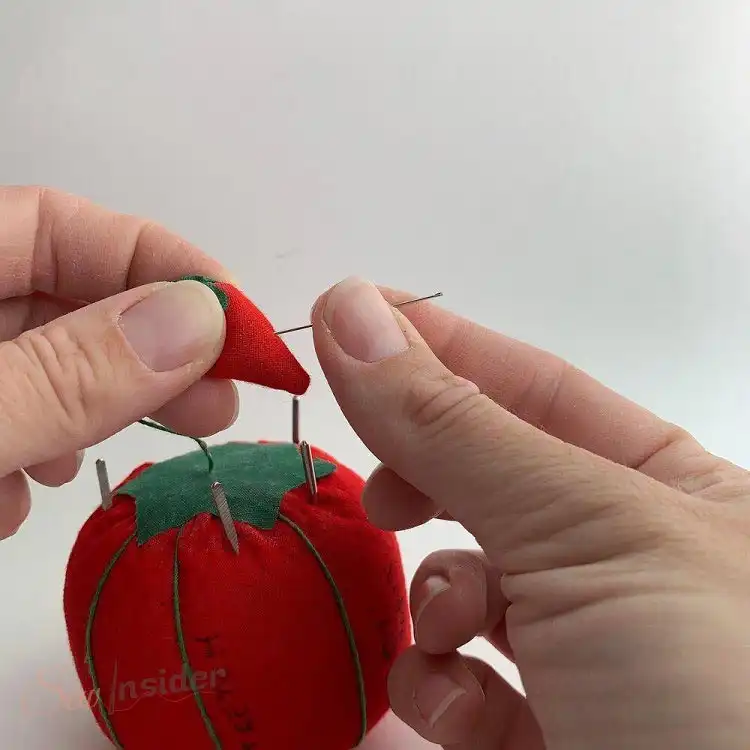You can sharpen a dull or blunt needle by using emery sand or board. This is the simplest way to sharpen both hand and machine sewing needles. There are some other options too for fixing a rough needle. Such as grade sandpaper, tinfoil, grinding, and lastly polishing. Though using these objects can be risky if you don’t be careful.
Also, it can feel like a hassle to some, who would prefer to throw away a dull needle. But you can give it a try and give life to the needle.

How Do I Sharpen A Blunt Needle
Nowadays, needles are cheap and easily buyable. That’s why many prefer to throw away a rough needle that is hard to work with. But you can fix your needle within a few minutes using tools available at your house. Here are some options and how to use them to sharpen a needle is described in detail-
Method 1. Emery Board Or Sand
Emery board is the nail file that is used to shape and smooth nails. Hence, you may have it for taking care of your nail. You can use the board to sharpen needles by rubbing a dull needle on it. You have to rub the blunt or unsmooth part of the needle on it.
In the case of emery sand, you’ll find a small strawberry full of sand with a tomato like a picture below. To sharpen all you need to do is put the needle in the sand and take it out. If only the tip of the needle is blunt then put the tip in and out continuously. Otherwise, take the whole needle through the strawberry.

If you don’t have a small pouch of emery sand then you can take some sand on your fingertip and rub it on the needle as well.
Method 2. Tinfoil
We all have tinfoil in our houses. Even if the foil is from any packaged food it’ll do the work. Wash the tinfoil and dry it. After that, stick the dull needle through the tinfoil at different spots continuously. This process is just like the one with an emery sand pouch but it’ll need a little force whence you can stick a needle through emery sand easily.
Method 3. Grinding On Sharpening Stone
You may have a sharpening stone in your kitchen for knives. You can sharpen scissors and needles on it too. Though it’ll work only on the tip of the needle, you have to rub it steadily on the stone rapidly.
Method 4. Polishing
After sharpening by using any of the three options you can polish the needle. But if you can use the needle smoothly then polishing isn’t necessary. For polishing, you can use toothpaste or soap. You can use metal polishing paste also if you have some. To polish, first, wear a rubber glove, then take a dab of paste and put the needle in it. Later, push the needle back and forth with force several times.
Next, wash the needle. Afterward, if you face a problem sticking the needle on the cloth you can polish using dry soap. Rub the needle through the bar soap a few times, as usual. Further, you can stick needles in the bar soap sometimes. It prevents rusting of the needles.
Can You Reuse A Dull Needle?
A dull needle can be reused if you can sharpen it. By sharpening the needle, it’ll become smooth and work on clothes again. There won’t be any problem sticking it on fabrics.
Conclusion
Furthermore, you can’t sharpen or reuse any syringe needles. This is not only ethically wrong but also health hazardous. Though you can sharpen and reuse sewing needles and pins without any fear. What’s more, you can prevent them from being rusty and unsmooth by keeping them away from water and vapor.
Leave a Reply